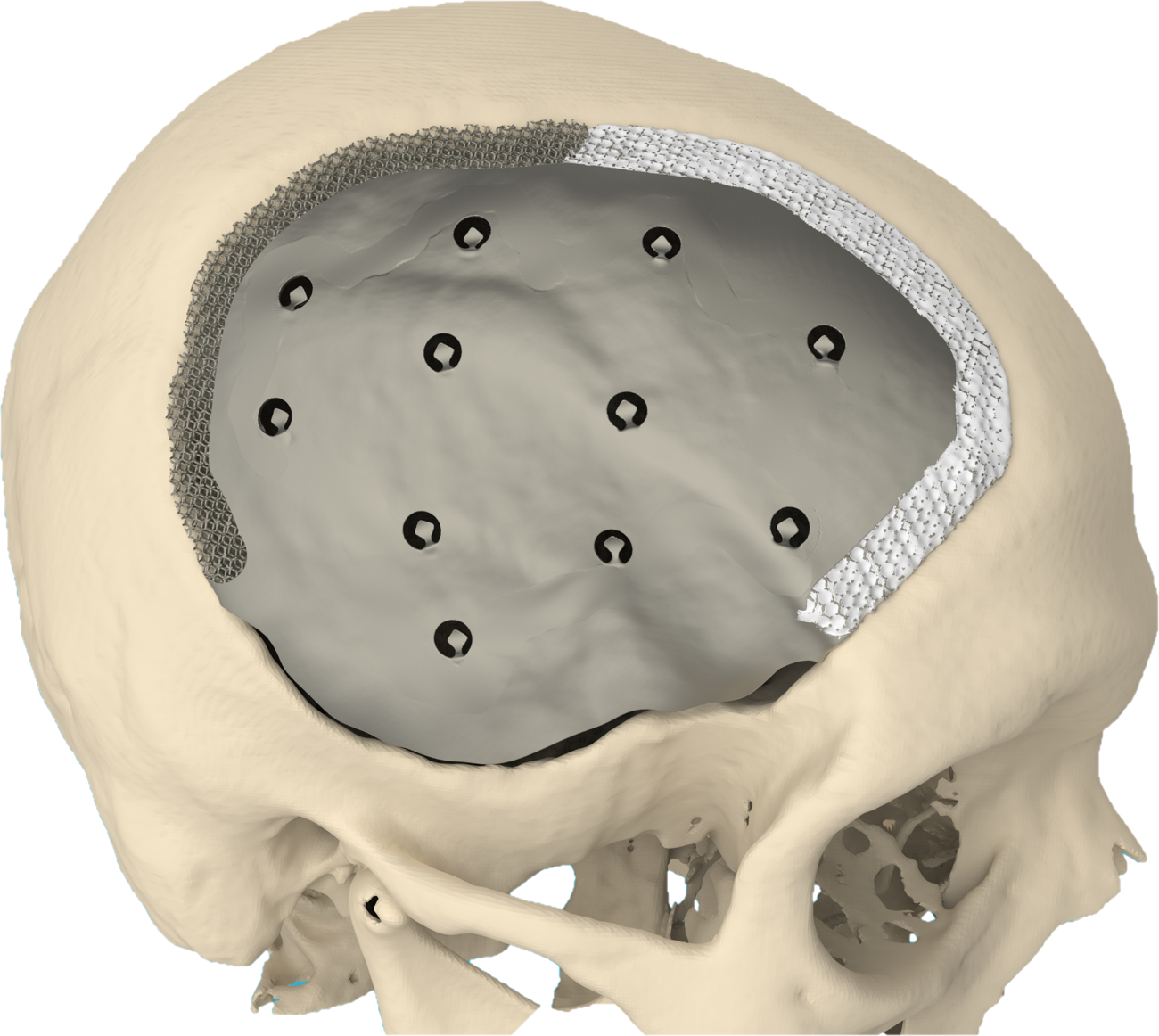Cranioplasty

Large skull defects (>25 cm2) are reconstructed for protection of the underlying brain, to shield it from infection and to correct aesthetic deformities. There is controversy as to the benefit of such reconstruction in the treatment for the “syndrome of the trephined” and in the reduction of seizure activity. When the grafting of the original bone flap has failed because of infection and/or resorption, reconstruction can be done using autologous split calvarial bone grafts, resin, calcium phosphate, titanium (alloy) sheets, titanium mesh, titanium 3D print and poly-ether-ether-ketone (PEEK). 3D print and CNC milling lend to computer-aided design and manufacturing of the reconstruction plate. Plate design requires attention related to cosmesis, flap dissection (access) and prevention of epidural fluid collections and wound dehiscence. The outer contour is reproduced by mirroring in medical imaging processing software or by de novo design.
-
Your medical history will be discussed before the procedure. Take an up-to-date medication list is taken with you. During this consultation, your surgeon will explain the concept and discuss risks and benefits with you.
-
The process starts with taking a CT scan.
-
Your surgeon and CADskills will design your implant.
-
The surgery will take place under general anesthesia.
-
Follow your surgeon's postoperative instructions, especially those related to medication.
-
See your surgeon for scheduled follow-up visits.
For more information about our concepts
